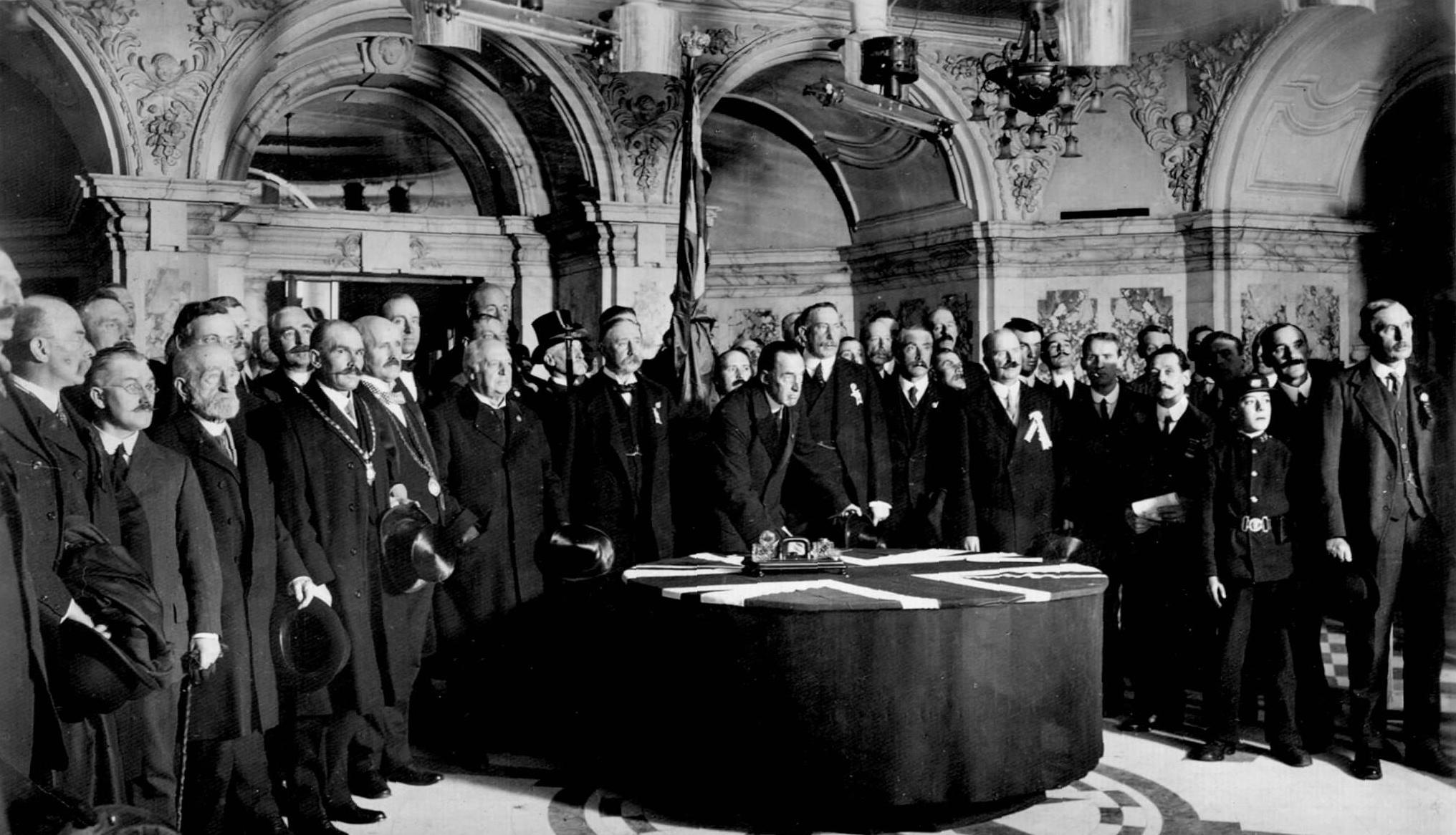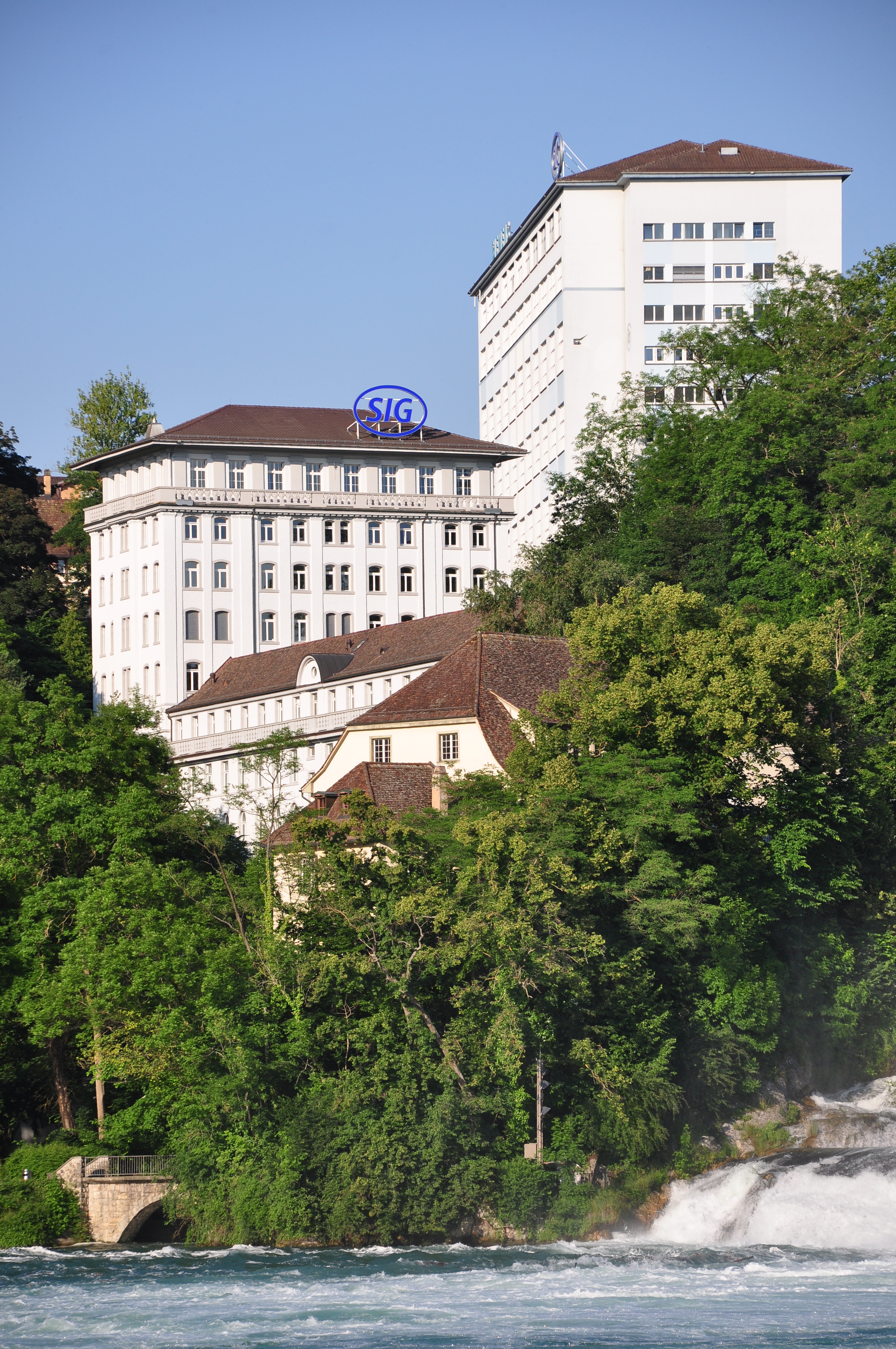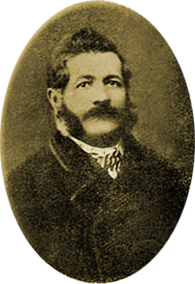|
M1870 Italian Vetterli
The M1870 Vetterli was the Italian service rifle from 1870-1891. In 1887, it would be modified into the repeating M1870/87 Italian Vetterli-Vitali variant. The Vetterli rifle used the 10.4mm Vetterli centrefire cartridge, at first loaded with black powder and later with smokeless powder. Some Vetterli rifles would later be converted into 6.5mm Carcano during World War I. Despite being supplanted by the Carcano rifle, it continued to see use in Italian service and abroad. Development In the aftermath of the Risorgimento, the Italian Army's service rifles were muzzleloaders converted to needle rifles through a method developed by Salvatore Carcano. From 1869-1870, four infantry regiments and five Bersaglieri battalions trialed various bolt-action designs which used metallic cartridges. Among these was the Swiss Vetterli M1868, which the Italian government ultimately selected. However, the decision was made to make the rifles single-shot instead of retaining the tubular magazine ... [...More Info...] [...Related Items...] OR: [Wikipedia] [Google] [Baidu] |
Bolt-action
Bolt-action is a type of manual firearm action that is operated by ''directly'' manipulating the bolt via a bolt handle, which is most commonly placed on the right-hand side of the weapon (as most users are right-handed). Most bolt-action firearms use a rotating bolt design, where the handle must first be rotated upward to unlock the bolt from the receiver, then pulled back to open the breech and allowing any spent cartridge case to be extracted and ejected. This also cocks the striker within the bolt (either on opening or closing of the bolt depending on the gun design) and engages it against the sear. When the bolt is returned to the forward position, a new cartridge (if available) is pushed out of the magazine and into the barrel chamber, and finally the breech is closed tight by rotating the handle down so the bolt head relocks on the receiver. Bolt-action firearms are generally repeating firearms, but some single-shot breechloaders also use bolt-action design as ... [...More Info...] [...Related Items...] OR: [Wikipedia] [Google] [Baidu] |
Carcano
Carcano is the frequently used name for a series of Italian bolt-action, magazine-fed, repeating military rifles and carbines. Introduced in 1891, this rifle was chambered for the rimless 6.5×52mm Carcano round (''Cartuccia Modello 1895''). It was developed by the chief technician Salvatore Carcano at the Turin Army Arsenal in 1890, and was originally called the Modello (model) 91 or simply M91. Successively replacing the previous Vetterli-Vitali rifles and carbines in 10.35×47mmR, it was produced from 1891 to 1945. The M91 was used in both rifle (''fucile'') and shorter-barreled carbine (''moschetto'') form by most Italian troops during World War I and by Italian and some German forces during World War II. The rifle was also used during the Winter War by Finland, and again by regular and irregular forces in Syria, Libya, Tunisia and Algeria during various postwar conflicts in those countries. The Type I Carcano rifle was produced by Italy for the Japanese Empire prior to Wor ... [...More Info...] [...Related Items...] OR: [Wikipedia] [Google] [Baidu] |
Home Rule Crisis
The Home Rule Crisis was a political and military crisis in the United Kingdom of Great Britain and Ireland that followed the introduction of the Third Home Rule Bill in the House of Commons of the United Kingdom in 1912. Unionists in Ulster, determined to prevent any measure of home rule for Ireland, formed a paramilitary force, the Ulster Volunteers, which threatened to resist by force of arms the implementation of the Act and the authority of any Dublin Parliament. Irish nationalists responded by setting up the Irish Volunteers "to secure the rights and liberties common to all the people of Ireland". Both sides then began importing weapons and ammunition from Germany, in the Larne gun-running and Howth gun-running incidents. HM Government's ability to face down unionist defiance was thrown into question by the "Curragh incident", when dozens of British Army officers threatened to resign or face dismissal rather than deploy into Ulster (ostensibly to secure arms against Ulster ... [...More Info...] [...Related Items...] OR: [Wikipedia] [Google] [Baidu] |
Cartouche
In Egyptian hieroglyphs, a cartouche is an oval with a line at one end tangent to it, indicating that the text enclosed is a royal name. The first examples of the cartouche are associated with pharaohs at the end of the Third Dynasty, but the feature did not come into common use until the beginning of the Fourth Dynasty under Pharaoh Sneferu. While the cartouche is usually vertical with a horizontal line, if it makes the name fit better it can be horizontal, with a vertical line at the end (in the direction of reading). The ancient Egyptian word for cartouche was , and the cartouche was essentially an expanded shen ring. Demotic script reduced the cartouche to a pair of brackets and a vertical line. Of the five royal titularies it was the ''prenomen'' (the throne name), and the "Son of Ra" titulary (the so-called '' nomen'' name given at birth), which were enclosed by a cartouche. At times amulets took the form of a cartouche displaying the name of a king and placed in tombs. ... [...More Info...] [...Related Items...] OR: [Wikipedia] [Google] [Baidu] |
Magazine (firearms)
A magazine is an ammunition storage and feeding device for a repeating firearm, either integral within the gun (internal/fixed magazine) or externally attached (detachable magazine). The magazine functions by holding several cartridges within itself and sequentially pushing each one into a position where it may be readily loaded into the barrel chamber by the firearm's moving action. The detachable magazine is sometimes colloquially referred to as a " clip", although this is technically inaccurate since a clip is actually an accessory device used to help load ammunition into a magazine. Magazines come in many shapes and sizes, from tubular magazines on lever-action and pump-action firearms that may tandemly hold several rounds, to detachable box and drum magazines for automatic rifles and light machine guns that may hold more than one hundred rounds. Various jurisdictions ban what they define as "high-capacity magazines". Nomenclature With the increased use of semi-au ... [...More Info...] [...Related Items...] OR: [Wikipedia] [Google] [Baidu] |
Cuirassiers Regiment (Italy)
The Cuirassiers Regiment ( it, Reggimento corazzieri) is a Carabinieri cavalry regiment acting as guard of honour of the President of the Italian Republic. Their motto is ''Virtus in periculis firmior''. From 1948 to 1965, the regiment was officially called ''Squadrone Carabinieri Guardie'' (Squadron of Carabineer Guards); from 1965 to 1990, ''Comando Carabinieri Guardie del Presidente della Repubblica'' (Carabineer Command of the Guards of the President of the Republic); and from 1990 to 1992, ''Reggimento Carabinieri Guardie della Repubblica'' (Carabineer Regiment of the Guards of the Republic). History Origins The first examples of a division of Archers and Esquires for the security of members of House of Savoy are dated back to the 15th century, but only during the dukedom of Emmanuel Philibert (1553–1580) a "Guard of Honor of the Prince" (''Guardia d'Onore del Principe'') was established with about fifty army-men led by a captain. This guard made its first appearance dur ... [...More Info...] [...Related Items...] OR: [Wikipedia] [Google] [Baidu] |
Carabinieri
The Carabinieri (, also , ; formally ''Arma dei Carabinieri'', "Arm of Carabineers"; previously ''Corpo dei Carabinieri Reali'', "Royal Carabineers Corps") are the national gendarmerie of Italy who primarily carry out domestic and foreign policing duties. It is one of Italy's main law enforcement agencies, alongside the Polizia di Stato and the Guardia di Finanza. As with the Guardia di Finanza but in contrast to the Polizia di Stato, the Carabinieri are a military force. As the fourth branch of the Italian Armed Forces, they come under the authority of the Ministry of Defence; for activities related to inland public order and security, they functionally depend on the Ministry of the Interior. In practice, there is a significant overlap between the jurisdiction of the Polizia di Stato and Carabinieri, although both of them are contactable through 112, the European Union's Single Emergency number. Unlike the Polizia di Stato, the Carabinieri have responsibility for policing the ... [...More Info...] [...Related Items...] OR: [Wikipedia] [Google] [Baidu] |
SIG Combibloc Group
SIG Combibloc Group AG, originally founded as ''Schweizerische Industrie Gesellschaft'' (German for Swiss Industrial Company; in French, as ''Société Industrielle Suisse''; and, in Italian, as ''Societa Industriale Svizzera''), and later known as SIG Holding AG, is a company currently active in the Packaging industry but used to participate in firearms and railcar manufacturing as well. In 2007, SIG Holding AG was acquired by Rank Group Limited, the private investment company of New Zealand businessman Graeme Hart, and operated under its subsidiary, Reynolds Group Holdings Ltd., which, in March 2015, announced completion of its sale of SIG to ONEX Corporation of Canada. In 2018, SIG Combibloc secured a $1.101 billion loan, with Barclays Bank acting as the administrative agent on the transaction. The SIG Combibloc Group shares are listed on SIX Swiss Exchange and it is a component of the SMI MID index. History The ''schweizerische Waggonfabrik''Hermann Alexander von Berlepsch ... [...More Info...] [...Related Items...] OR: [Wikipedia] [Google] [Baidu] |
Tubular Magazine
A magazine is an ammunition storage and feeding device for a repeating firearm, either integral within the gun (internal/fixed magazine) or externally attached (detachable magazine). The magazine functions by holding several cartridges within itself and sequentially pushing each one into a position where it may be readily loaded into the barrel chamber by the firearm's moving action. The detachable magazine is sometimes colloquially referred to as a "clip", although this is technically inaccurate since a clip is actually an accessory device used to help load ammunition into a magazine. Magazines come in many shapes and sizes, from tubular magazines on lever-action and pump-action firearms that may tandemly hold several rounds, to detachable box and drum magazines for automatic rifles and light machine guns that may hold more than one hundred rounds. Various jurisdictions ban what they define as "high-capacity magazines". Nomenclature With the increased use of semi-automa ... [...More Info...] [...Related Items...] OR: [Wikipedia] [Google] [Baidu] |
Vetterli Rifle
The Vetterli rifles were a series of Swiss army service rifles in use from 1869 to 1889,Barnes, p.196, "10.4x38R Swiss Vetterli M69/81". when they were replaced with Schmidt–Rubin rifles. Modified Vetterlis were also used by the Italian Army. The Swiss Vetterli rifles combined the American Winchester Model 1866's tubular magazine with a regular bolt featuring for the first time two opposed rear locking lugs. This novel type of bolt was a major improvement over the simpler Dreyse and Chassepot bolt actions. The Vetterli was also the first repeating bolt-action rifle to feature a self-cocking action and a small caliber bore. Due to the Swiss Federal Council's early 1866 decision to equip the army with a breechloading repeating rifle, the Vetterli rifles were, at the time of their introduction, the most advanced military rifles in Europe. The Vetterli was the replacement for the Eidgenössischer Stutzer 1851, an Amsler-Milbank metallic cartridge conversion from previous Swiss m ... [...More Info...] [...Related Items...] OR: [Wikipedia] [Google] [Baidu] |
Bersaglieri
The Bersaglieri, singular Bersagliere, (, "sharpshooter") are a troop of marksmen in the Italian Army's infantry corps. They were originally created by General Alessandro La Marmora on 18 June 1836 to serve in the Royal Sardinian Army, which later became the Royal Italian Army. They can be recognized by their distinctive wide-brimmed hats decorated with black capercaillie feathers, which is worn with the dress uniform. The feathers are also applied to their combat helmets. Description The Bersaglieri Corps were a high-mobility light infantry at their inception in 1836, with their specific situation evolving with changes in warfare. In the nineteenth century, Bersaglieri acted as skirmishers or shock troops, moving from place to place by running. An elaborate system of bugle calls allowed their units to be deployed and commanded quickly, singly or in combination. The tradition of running continues today in parades and during barracks duty. In World War I, some Bersaglieri serv ... [...More Info...] [...Related Items...] OR: [Wikipedia] [Google] [Baidu] |
Salvatore Carcano
Salvatore Carcano ( Robbiate, 11 October 1827 - Turin, 1903) was an Italian inventor renowned for designing the Carcano bolt-action rifle, adopted by the Italian Regio Esercito throughout World War II. Biography He was born near the industrialized city of Varese in the then-Austrian Lombardo-Veneto, in a family of modest income. He enlisted as a volunteer in the Lombard artillery in April 1848 during the First Italian War of Independence, after the Austrian victory he fled to Piedmont and was admitted into the Sardinian artillery as "Cadet gunsmith". When his enlistment expired in 1852 he was immediately employed by the Royal Arms Factory in Turin, quickly rising through the ranks. His work (including machinery designed by him for precision working of rifle parts), contributing to Piedmontese effort to prepare for the Crimean War, earned him a medal and a diploma in 1858. After travelling in France and Switzerland from 1862 to 1863 to acquire and inspect machinery, in 1868 he ... [...More Info...] [...Related Items...] OR: [Wikipedia] [Google] [Baidu] |






